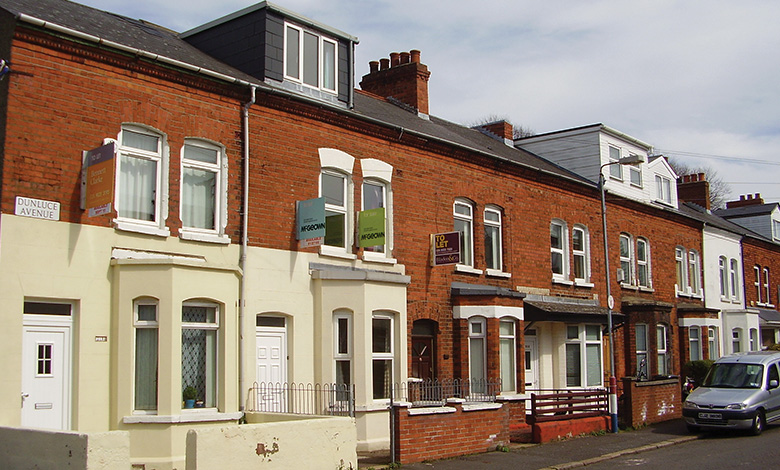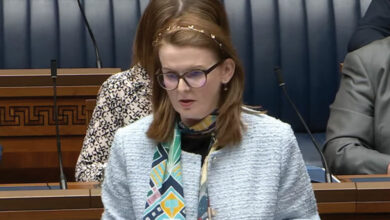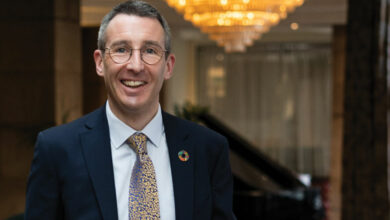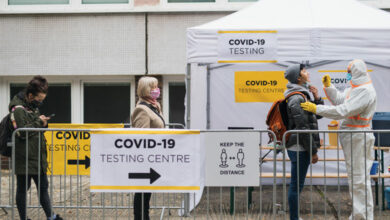Health standards decline across Northern Ireland

Census figures have revealed a decline in levels of wellness, with more people being forced to act as carers for their relatives. It further reports a significant expansion in the private rented sector, and that homes are still reliant on fossil fuels for home heating.
The December 2022 release of the census was centred around responses to housing and health. Declining health standards have been recorded across the board, with additional rises in the number of people (nearly 70,000) who are providing unpaid care, a figure which includes 2,600 children aged 14 and under.
Unpaid care
Over the last 10 years, there has been a significant increase in the number of unpaid carers in Northern Ireland, amid a backdrop of failure to implement health reform prior to the collapse of the Executive.
Around one-in-eight people (222,200) provided unpaid care to a relative or friend who had a health condition or illness. Within this, over 68,700 people provided 50 or more hours of unpaid care per week. It was most common among those aged 40 to 64, where the ratio changes to one person in five (or 124,600 people). Even more shocking is that 2,600 children aged five to 14 provided unpaid care.
Overall, the number of people providing 50 or more hours unpaid care each week has increased from 56,300 people in 2011 to 68,700 people in 2021. Additionally, the number of people providing more than 50 hours per week of unpaid care number has risen from 46,700 people in 2001 (3 per cent of the population) to 68,700 (3.8 per cent of the population) in 2021.
Health in Northern Ireland
There has been a notable rise in the number of people in Northern Ireland with ‘bad or very bad’ health. In 2011, 100,000 people had ‘bad or very bad’ general health, by 2021 this had risen to nearly 150,000 people. In percentage terms this is a rise from 5.6 per cent of the population in 2011 to 7.7 per cent in 2021. The census report analyses that this is “driven partly by the increasing number of older people in our population”.
The overall picture of health in Northern Ireland is that the population’s health could be better, with just under 1.5 million people (78.7 per cent), indicating they had ‘good or very good’ general health.
Meanwhile, nearly 150,000 people indicated they had ‘bad or very bad’ general health. The remaining 260,000 people indicated they had ‘fair’ general health.
As expected, general health standards fall with age; while less than 1 per cent of people aged under 15 had ‘bad or very bad’ general health, this figure rises to 17 per cent of people aged 65 and above. In contrast, nearly 97 per cent of people aged under 15 had ‘good or very good’ general health, a figure which falls to half of people aged 65 or more.
In addition, the census report shows that, between 2011 and 2021, health standards have declined in nine of Northern Ireland’s 11 council areas.
Housing
The census finds that there are 52,300 vacant houses in Northern Ireland. Although some of these homes will invariably not be fit for habitation, there are comfortably enough homes to adequately house Northern Ireland’s homeless population of 15,758.
10,900 of Northern Ireland’s vacant homes are in Belfast, whilst Causeway Coast and Glens Borough Council area encompasses 9,000 vacant homes, meaning that 13.5 per cent of houses in this council area are vacant, the highest proportion of the 11 councils in the region.
On homeownership, the census finds that almost two-thirds (65.2 per cent) of the population of Northern Ireland own their homes, with the remaining 34.8 per cent in the rented sector.
Despite these relatively promising numbers, the private rental sector has seen a stark growth since 1981, with the number of people in private rented accommodation having nearly doubled from 9.1 per cent to 17.2 per cent, making this the fastest-growing sector in housing.
This has been matched by a vast reduction in the number of people in social housing, as Northern Ireland’s social housing sector continues to lag far off demand, leaving prospective tenants forced to turn to the private sector.
Additionally notable was the regional discrepancy in homeownership, with 74.1 per cent of Lisburn and Castlereagh residents owning their home, compared to a narrow majority (51 per cent) in Belfast.
Energy sources
Despite the passage of the Climate Change Act, Northern Ireland’s home heating system remains reliant on home heating oil, with 49.5 per cent of homes in Northern Ireland using heating oil as their source of energy.
Meanwhile, 31.6 per cent of homes in the region are reliant on mains gas as their source of home heating, with the remaining 18.9 per cent not categorised. Belfast City Council area, however, bucked this trend, with 70.9 per cent of homes making usage of mains gas for their heating supply, whilst only 20.2 per cent of homes were using home heating oil.
Further to this, there was a strong correlation between rural councils and a higher usage of home heating oil as a heat source for homes, with Fermanagh and Omagh District Council area recording a ratio of home heating oil to mains gas heating of 48:1.
The census finds that residents in rural council areas have a much higher usage of renewable energy, with usage of 7.6 per cent recorded in Fermanagh and Omagh, compared with just 3.3 per cent of residents in Belfast.






